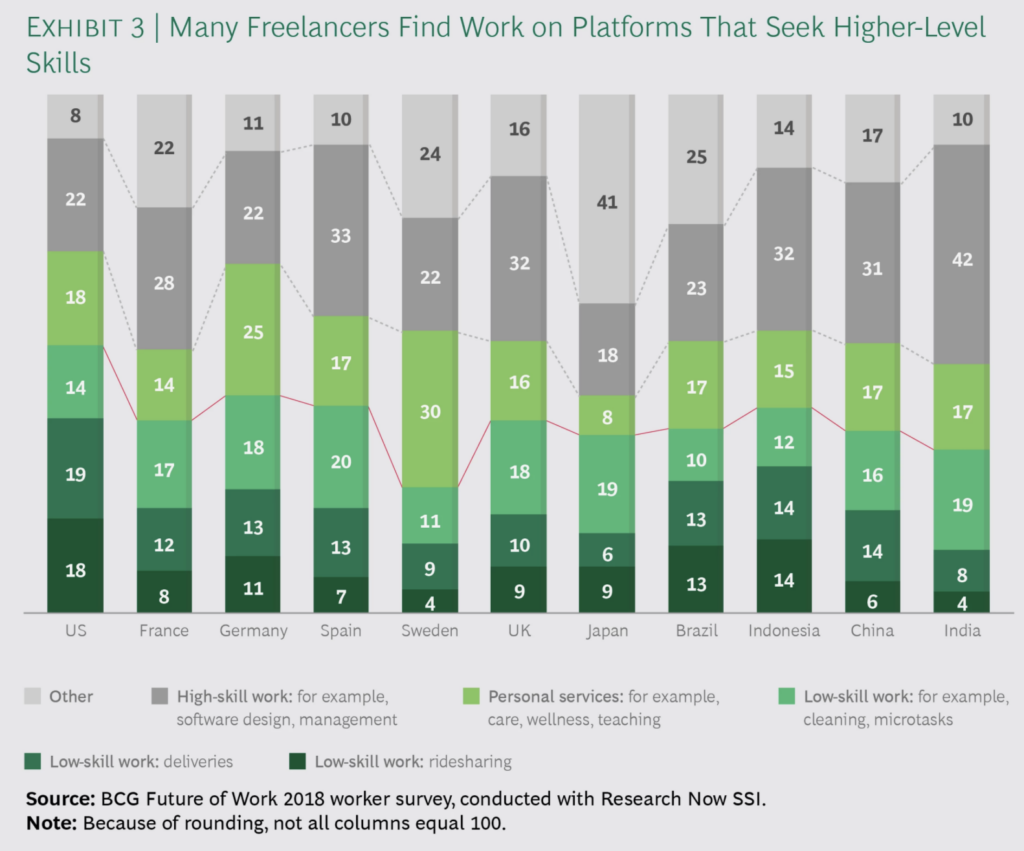Clickworker: From Gigwork to AI Training Data

Embrace the power of collaboration with Clickworker! 🌐 Connect with a global workforce to tackle tasks efficiently and unlock endless possibilities. 💼💡
Gigwork platforms now proliferate – from Fiverr to Upwork to Taskrabbit, there are no shortage of avenues to find gig workers to fulfil your task needs. Clickworker is amongst them: established in 2005, it has grown into a prominent platform with over 4.5 million workers worldwide. Whilst initially a general gig work platform, it has since pivoted towards specialising in the provision of AI training data. Their focus predominantly lies in tasks on the lower end of the spectrum, making them a valuable resource for businesses seeking cost-effective solutions in the realm of AI data annotation. With a vast and diverse pool of contributors, Clickworker continues to play a pivotal role in the evolving landscape of digital work and AI development.
Value Creation
In contrast to decentralised platforms like UpWork, Clickworker adopts an organised approach to task management, which plays a significant role in its value creation. The platform is centralised: Clickworker excels at efficiently matching workers to tasks, a process crucial for optimising productivity and achieving high-quality results. This organisational strategy is a key component of Clickworker’s value creation, as customers often do not have time or expertise to select the best workers for their tasks. Especially when data is being used as an input to a AI model, quality matters – customers rely on the platform to do quality assurance in addition to the provision of the service themselves.
Second, the platform’s quality assurance structure sets it apart by implementing rigorous mechanisms such as the “best of 3” and “best of 7” evaluation methods. Additionally, the provision of specialist QA training ensures high-quality results for tasks, enhancing the value delivered to clients.
Third, though Clickworker started out as a general work platform in 2005, they quickly recognised in recent years that much gig work might be made redundant by AI. They they have slowly pivoted into specialising in AI training data, which will remain an important input to AI models for decades to come, generating potential business for them. In other words, they had the foresight to try to make their workforce more complementary to AI (rather than risk being substituted away), even though they are mostly low-skilled workers. Heavy investment in project-specific training and evaluations contribute to the platform’s adaptability and effectiveness in meeting diverse project requirements.
Scalability
One of Clickworker’s strengths lies in its capacity to match workers with suitable jobs effectively. It excels in its ability to rapidly scale up the workforce for a project, potentially supplying thousands of workers instantly – this is unique to the fact that they have a robust workforce across the globe, built over decades of operation. This characteristic makes it particularly suitable for projects with varying workforce demands, or businesses with fluctuating or large-scale needs, contributing to its long-term growth and adaptability.
Sustainability
However, there are some threats to their long-term viability. In particular, the emergence of more sophisticated data annotation platforms and companies that hire full time employees in order to provide more specialised and consistent services may pose a threat to their model. Scale.AI and other newer players with more flexibility and knowledge of the new developments in AI (Clickworker still has many of the old guard) may also understand the needs of the market better.
One other prominent challenge arises from the evolving composition of tasks over time, and the dynamic changes in the nature of work. As firms engage in repeated contracts with platforms like Clickworker, the nature and difficulty of tasks may shift. This can pose a challenge in terms of workforce allocation and matching, potentially leading to a mismatch between worker skills and task requirements. Addressing this issue requires the platform to be agile in adjusting its recruitment efforts and optimizing the process of assigning workers to tasks.
Moreover, as AI models transition from training phases to deployment, the overall composition of cases is likely to change. This shift introduces more complex and challenging tasks, potentially requiring a higher level of expertise from the workforce. It also necessitates a more agile feedback loop between clients and workers to ensure the quality and accuracy of completed tasks.
Moreover, the integration of AI into the production process of data itself has profound implications for labor input. Technological advances in pre-labelling AI models may shift the nature of work for humans to one primarily of verification as opposed to fresh annotation. This shift may necessitate retraining and upskilling efforts to ensure that the workforce remains relevant and adaptable in the face of advancing technology. As workers also seek work that require higher-level skills (and therefore pay higher), Clickworker needs to adjust its positioning in the market to make sure they do not fall into redundancy.

Dynamic changes in the nature of crowdsourced work, driven by factors such as evolving task composition and the deployment of AI, pose significant threats to the sustainability of platforms like Clickworker. Adapting to these shifts requires a keen understanding of emerging trends, agile workforce management strategies, and a commitment to retraining and upskilling efforts to ensure continued relevance and effectiveness in the evolving gig economy.
Sources:
AI training data and other data management services (2023) clickworker.com. Available at: https://www.clickworker.com/ (Accessed: 08 November 2023).
Bhattacharyea, S. (2022) Clickworker Review: Is it a good way to make money?, GOBankingRates. Available at: https://www.gobankingrates.com/reviews/clickworker/ (Accessed: 08 November 2023).
Dzieza, J. (2023) Ai is a lot of work, The Verge. Available at: https://www.theverge.com/features/23764584/ai-artificial-intelligence-data-notation-labor-scale-surge-remotasks-openai-chatbots (Accessed: 08 November 2023).
Person (2023) Ai boom is dream and nightmare for workers in Global South, Eco. Available at: https://www.eco-business.com/news/ai-boom-is-dream-and-nightmare-for-workers-in-global-south/ (Accessed: 08 November 2023).
Wallenstein, J. et al. (2022) The new freelancers: Tapping talent in the gig economy, BCG Global. Available at: https://www.bcg.com/publications/2019/new-freelancers-tapping-talent-gig-economy (Accessed: 08 November 2023).


